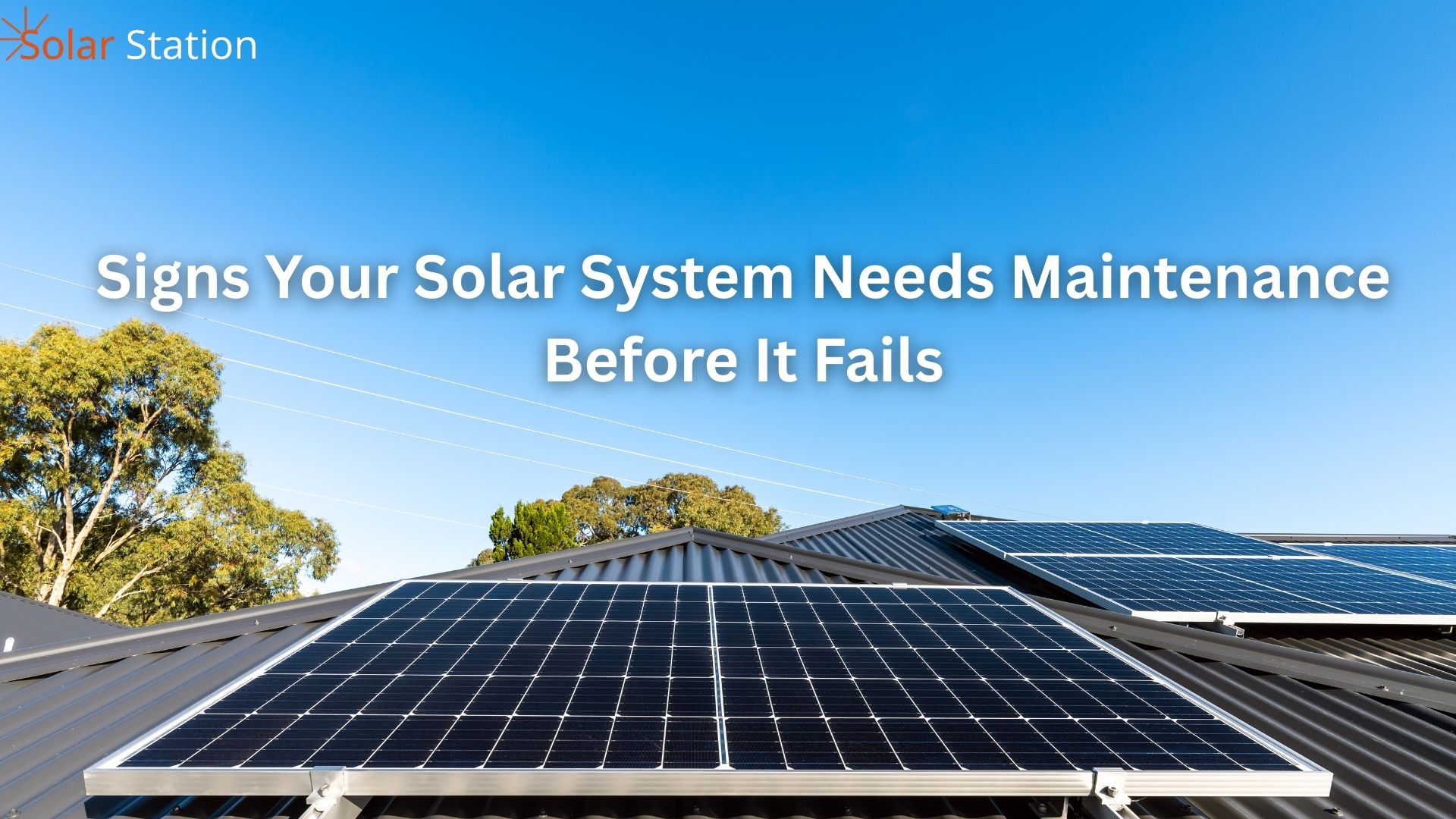
Signs Your Solar System Needs Maintenance Before It Fails
Date: 2025-09-01
Solar panels are a long-term investment, but regular maintenance is essential. This guide highlights common warning signs, real-life issues, and simple tips to keep your solar system running efficiently for years.
Installing a solar system is a smart choice. It reduces electricity bills and supports a sustainable future. However, like any electrical system, solar panels and their parts need regular maintenance. Ignoring small issues can lead to less efficiency, expensive repairs, or even system failure. This guide highlights the key signs that your solar system needs maintenance before problems get worse.
1. Significant Drop in Energy Production
One clear sign of trouble is when your solar system produces less electricity than usual.
How to monitor:
Check your inverter display or monitoring app for daily, weekly, and monthly energy output.
Compare your current production with past months, taking seasonal changes into account.
Possible causes:
Dirty or dusty panels, which are common in cities like Jaipur or during monsoon.
Shading from newly grown trees or construction.
Degraded solar panels or faulty inverters.
2. Unusual Inverter Lights or Error Codes
The inverter is the heart of your solar system. If its indicator lights change color or blink, it could mean there's a problem.
What to check:
Refer to your inverter’s manual for error codes.
Look for red or yellow warning lights instead of green.
Common issues indicated:
Grid connection problems.
Overheating or internal failures.
Wiring or fuse problems.
3. Visible Physical Damage to Panels
Panels can be damaged by storms, falling debris, or wear over time.
Signs to watch for:
Cracks or chips on the glass surface.
Loose or corroded mounting hardware.
Discoloration or burnt marks.
Action:
Damaged panels lower efficiency and may need professional repair or replacement.
4. Sagging or Loose Mounting Structure
Solar panels are installed on rooftops or mounts, which should stay stable.
Problems can arise from:
Strong winds during monsoon.
Aging hardware or poor installation.
Check for:
Panels that tilt or wobble.
Screws or bolts that look loose or rusty.
5. Accumulation of Dirt, Dust, or Bird Droppings
In India, especially in urban areas or regions with dust storms like Rajasthan, panels can get dirty quickly. Even a thin layer of dust can cut efficiency by 10 to 25 percent.
Tips:
Inspect your panels regularly, especially after the monsoon or dusty seasons.
Clean with soft brushes, mild soap, and water. Avoid harsh chemicals or high-pressure washing.
6. Battery Issues (For Solar with Storage)
If your solar system has batteries, signs of trouble can include:
Reduced backup time.
Swelling or leakage in battery units.
Slow charging or discharging.
Tip:
Check the electrolyte level in lead-acid batteries and make sure lithium batteries are within the right temperature range.
7. Unexpected High Electricity Bills
A sudden rise in your grid electricity bill may suggest your solar system isn’t producing as much energy as before.
Possible reasons:
Faulty inverter.
Loose wiring or connection issues.
Degraded panels.
8. Strange Noises or Smells
Electrical components rarely make noise. Buzzing, hissing, or burning smells are warning signs that need immediate attention.
Safety tip:
Turn off the system and call a certified technician right away.
Real-Life Problems When Solar Systems Aren’t Maintained
Neglecting maintenance can cause real problems for homeowners. Here are some examples:
Rooftop Roof Leaks Due to Improper Mounting
A family in Jaipur noticed water leaking after heavy rain. The solar panels’ mounting hardware had loosened, causing roof damage.
Reduced Energy Production During Peak Summer
In Delhi, a homeowner’s panels were covered with dust for months. In May, when electricity demand was highest, their solar system produced only half the usual energy.
Battery Backup Failure in Monsoon
A school in Kerala depended on solar battery backup for evening classes. Batteries weren’t checked regularly, and during the monsoon, the backup failed completely, disrupting operations.
Unexpected Fire Hazard
In a Mumbai apartment, corroded wiring caused a small electrical fire. Luckily, no one was hurt, but the incident showed the risk of ignoring maintenance.
Maintenance Tips to Prevent Failures
Schedule Routine Inspections – At least twice a year.
Keep Panels Clean – Regular cleaning improves efficiency.
Monitor Performance – Use apps or monitoring devices to track energy output.
Hire Certified Technicians – Avoid DIY fixes for wiring or inverters.
Trim Nearby Trees – Ensure panels aren’t shaded, especially during peak sunlight hours.
Conclusion
Solar panels can last 20 to 25 years, but proper maintenance is essential for peak performance. By recognizing the signs above and acting promptly, you can prevent costly repairs, maintain efficiency, and enjoy uninterrupted clean energy.
Remember: Regular maintenance is cheaper than emergency repairs. Keep an eye on your panels, inverter, and batteries. Your solar system will reward you with years of reliable energy savings.











